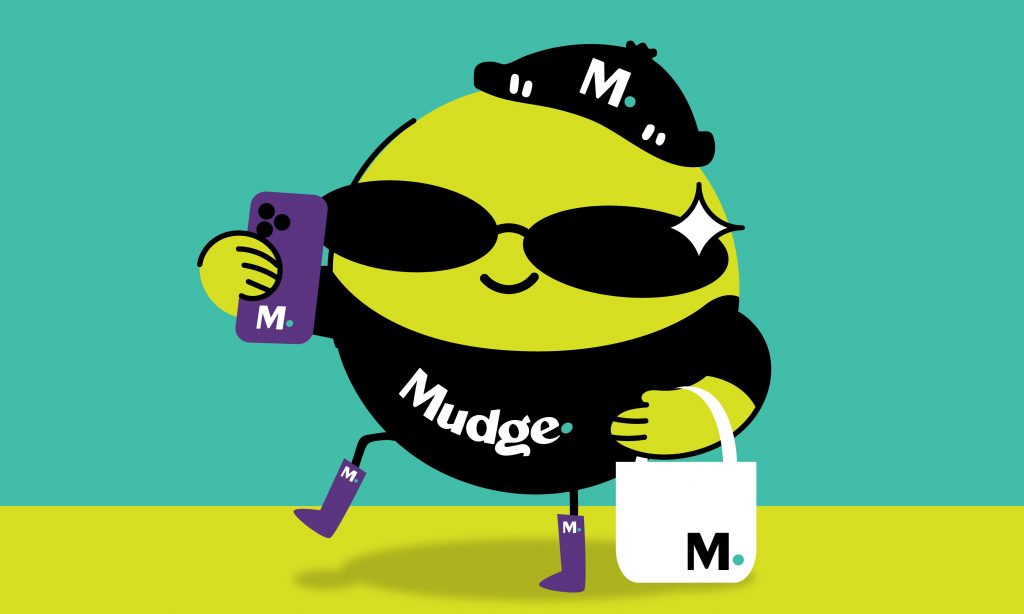
Before brands like Fishwife, Liquid Death, and OLIPOP changed the game, brand merch was stuck in a state of purgatory within the beige confines of trade shows, giveaways, and PR events. Opting for merch that focused on function and visibility rather than style and taste, consumers wore the XXL t-shirts and used the neoprene koozies because they were free, not because they looked good.
The elevation of brand merch into legitimate pieces of style and art marked a turning point—no longer an afterthought, merchandise became a canvas for storytelling, self-expression, and cultural relevance. As consumer expectations evolved and social media turned purchases into personal branding, brands began designing merchandise that reflected lifestyle values as much as product loyalty.
Why Today’s CPG Merch Feels So Different
For years, brand merch sat in purgatory within the confines of trade shows and giveaways. A far cry from the McDonald’s Batman Forever glass mugs, you’d wear the XXL t-shirt to bed and use the cheap neoprene koozies when it was convenient. Merch simply existed to promote the product.
Now, the merch is the product. From Fishwife’s Mussel Tee and Bush’s Baked Beans’ Hot Honey Jacket to Grillo’s cold plunge dunk tank, these represent a new breed of high-quality, novel merchandise that transcends the status quo by meeting the consumer’s need for something worth wearing.
In the hands of savvy brands, consumers now see branded merch like sweatsuits and custom fish tongs as legitimate fashion. In 2019, 85% of people reported buying custom-branded merchandise, with 57% purchasing as a means of publicly displaying their personal interest in said brand. Whether they’re stuffing their branded totes with farmer’s market finds or checking the time on their Death Clock, this new generation of merch is designed to live outside the grocery aisle and inside culture.
What makes today’s CPG merchandise so compelling? First and foremost: quality. Often in collaboration with illustrators, fashion designers, and celebrities of varying fame, the new era of brand merch isn’t nearly as disposable now as it was even five years ago. Brands are opting for heavyweight blanks, embroidered graphics, specialty inks, and sustainable materials that evoke a more refined aesthetic for merch that’s designed to last.
Brands are also getting smarter about how they launch merch—limited drops, collabs, pre-orders, and even auction-style releases. They’re borrowing from the streetwear and DTC playbooks to create urgency, collectability, and community buzz. It’s not just “free t-shirt with purchase” anymore, it’s “join the waitlist,” “get it before it sells out,” or “look what we made with this amazing artist.” Brands have entered into an unspoken agreement with consumers to release the type of cool merch others would cringe at if released by a different brand within the same category.
This trusting approach transforms customers into collectors and passive fans into brand evangelists.
This shift also speaks to a deeper trend: brands as identity platforms. Consumers—especially Gen Z and younger millennials—aren’t just buying products, they’re aligning with belief systems. When you wear a Pricklee Cactus Water shirt with original artwork by Terry Chui or an $85 OLIPOP hoodie, you’re broadcasting the brand’s values with apparel people actually want to wear. Fishwife is a standout example of CPG merch done right—stylish, intentional, and fully aligned with the brand’s identity. The Mussel Tee, with its hand-drawn shellfish graphic, exudes a boutique streetwear vibe, which is amusing when you consider this is all coming from a tinned fish brand.
On The Other Hand…
While today’s merch boasts higher quality, better materials, and even sustainable messaging, the reality is that we’re still talking about more stuff: cotton, packaging, plastic, and carbon emissions. Even “eco-conscious” collections can fall short when measured against their lifecycle impact, especially when they’re trend-driven or drop-based. Limited runs can generate urgency, but they can also encourage overproduction and waste if demand is miscalculated or if the items aren’t truly wearable beyond a moment of hype.
“Do brands owe us anything? Are they even trying to get us to respect them?” asks Strategic Account Director at Mudge, Kristen Scalise.“We’re already giving them our money for their products, and now we are paying THEM to advertise their brand on our bodies? In our homes? When does it end? What do we get in return?”
Anyone who’s anyone would jump at the chance to wear baked beans slides, but they walk a fine line between meaningful design and manufactured desire.
One brand guilty of double-dipping in Late Stage Capitalism through vertical integration is Poppi, which released a limited-edition apparel collection last year in collaboration with Target, a notable seller of Poppi’s core products.
Unlike the products they’re designed to promote, merch is rarely recyclable or biodegradable. Most cans can be recycled, but even that chic Spindrift chore jacket or Ghia basket tote will inevitably live out eternity in a landfill. The problem isn’t just about material waste—it’s about marketing-led manufacturing. When brands create products primarily to sell a vibe, rather than meet a need, it raises the question: Is merchandise just another form of fast fashion?
If you’re a CPG brand thinking about creating merch, stop and ask yourself why first. Take the time to reflect on the pros and cons of your merch before sending that order to the t-shirt printer. Consider working with eco-friendly wholesalers like Bella + Canvas, or opting for merch with a regenerative angle. When every product drop is framed as a moment, a mood, or a movement, it becomes increasingly difficult to distinguish where genuine creative expression ends and performative capitalism begins. Despite its aesthetic upgrades, brand merchandise continues to operate within a system that prioritizes profit over long-term impact.
